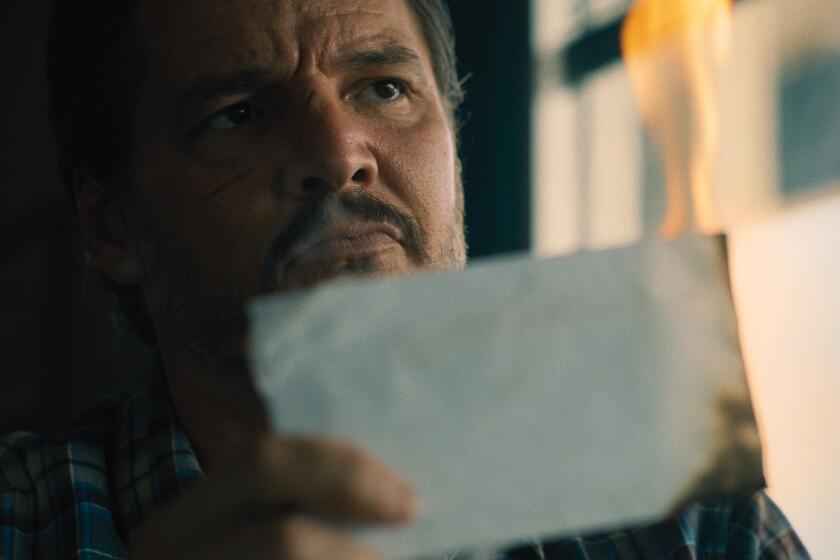His silence was golden
- Share via
The director D.W. Griffith (1875-1948) is probably best remembered for his 1915 epic, “The Birth of a Nation,” the most ambitious and commercially successful film made in the United States to that point. Unfortunately, the drama, about the Civil War and Reconstruction, is so appallingly racist in its depiction of African Americans that it is difficult and distasteful to sit through, and contemporary viewers may be forgiven for wondering at Griffith’s exalted reputation.
All the more reason to delight in Kino International’s continuing commitment to the filmmaker’s work. If Griffith was a flawed giant, he was a giant all the same. Having already released “The Birth of a Nation” in a boxed set that also included the fascinating and unwieldy “Intolerance” (1916), the harrowing study of child abuse “Broken Blossoms” (1919), the French Revolution spectacle “Orphans of the Storm” (1921) and more than 30 of Griffith’s short silents that all but invented film grammar, Kino has gone on to give us a second helping.
“Griffith Masterworks, Volume Two” ($90) includes only one famous film -- the Victorian tear-jerker “Way Down East” (1920), with heroine Lillian Gish riding the ice floes down the Connecticut River -- but it presents a much more varied picture of the director’s work. An argument could be made that “The Avenging Conscience” (1914) was the first great horror film, a loose setting of Edgar Allan Poe’s “The Tell-Tale Heart” that also alludes to “The Black Cat,” “The Pit and the Pendulum” and the author’s own biography, complete with hallucinations.
“Sally of the Sawdust” (1925) is one of Griffith’s rare comedies, featuring W.C. Fields in one of his first roles. The set also includes a much more measured and compassionate take on the Civil War, “Abraham Lincoln” (1930), the first of only two sound films Griffith made, with Walter Huston as an appropriately stately and beneficent hero. A documentary titled “D.W. Griffith: Father of Film” (1993), assembled by film historians Kevin Brownlow and David Gill, traces Griffith’s career and includes interviews with Gish, Blanche Sweet and other early stars.
For me, the great surprise in this set is “The Struggle” (1931), the last film Griffith made and a gritty, unflinching study of alcoholism that ranks with “The Crowd” and “The Lost Weekend.” Made on a tight budget, shot on location in Manhattan and the Bronx, and featuring no well-known actors (although sharp eyes will be able to identify that perennial silent film mother figure Kate Bruce, advanced here to the tiny role of Granny), the film was a critical and financial disaster and effectively destroyed any chance of further work for Griffith, who was dismissed as a spent relic, as old-fashioned as the silent movies he had so recently ruled.
The print of “Way Down East,” assembled with the help of the Museum of Modern Art, is magnificent, and Gish’s performance as Anna deserves every word of praise it has ever received. The film is marred by local-yokel humor that is stupefyingly unfunny and seems to go on forever. (I doubt it was much more palatable in 1920.)
Nevertheless, the great moments in the film -- above all, Anna’s scene with the dying baby -- transcend their melodramatic origins and rise to the level of high tragedy.
For Kino’s third volume, let me propose “A Romance of Happy Valley” (1919) and “True Heart Susie” (1919), both simple, flawless evocations of small-town America, and, by way of contrast, “Isn’t Life Wonderful” (1924), an affecting and uncharacteristic narrative set in impoverished Europe after World War I.
And perhaps somebody may yet unearth a print of “The Greatest Thing in Life” (1918), another Civil War film and one that has long been presumed lost, in which a formerly arrogant white Southern soldier matures to the degree that he can tearfully kiss the cheek of a fallen black comrade.
More to Read
Only good movies
Get the Indie Focus newsletter, Mark Olsen's weekly guide to the world of cinema.
You may occasionally receive promotional content from the Los Angeles Times.









